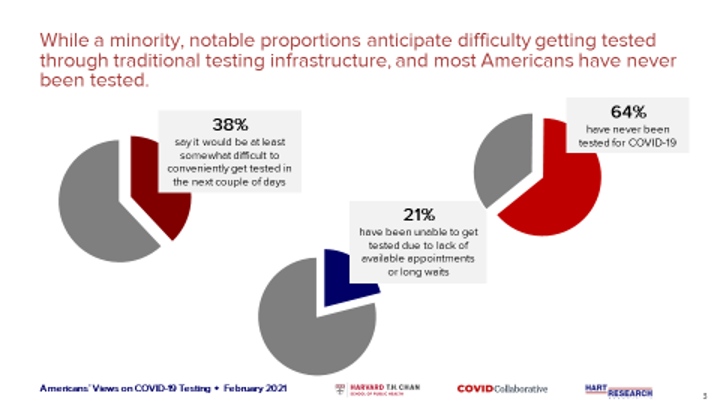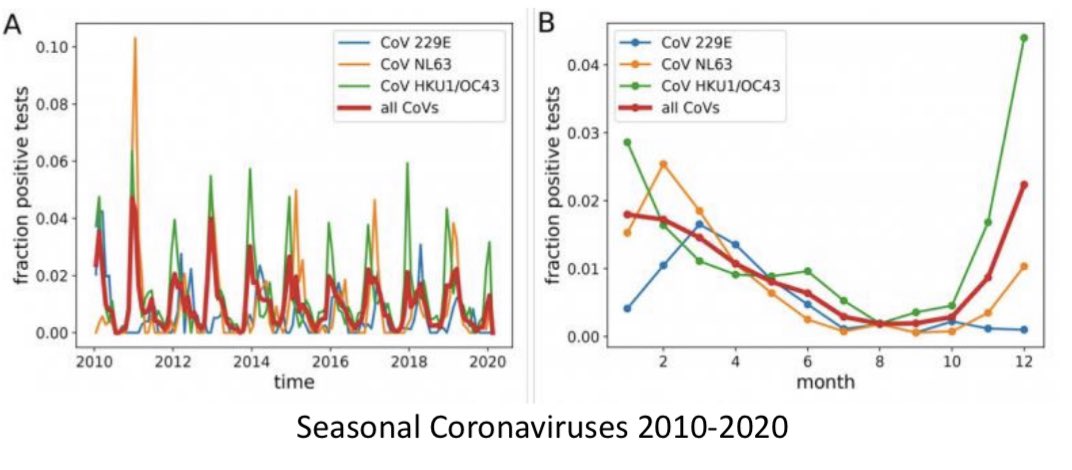
THREAD: NEW INFORMATION!
A first of its kind national survey out today from @CCDD_HSPH @TheCOVIDCollab and @HartSurveys on at-home rapid testing
What did we learn?
86% of Americans are willing/eager to use at-home rapid tests – BUT awareness of rapid antigen tests is low
1/x
A first of its kind national survey out today from @CCDD_HSPH @TheCOVIDCollab and @HartSurveys on at-home rapid testing
What did we learn?
86% of Americans are willing/eager to use at-home rapid tests – BUT awareness of rapid antigen tests is low
1/x

This week Congress is considering $46B for testing, including for rapid tests. What does America think about that?
85% of Americans want government to fund these tests & distribute them. Strong support for rapid tests across political spectrum: 94% of Dems and 74% of Repubs.
85% of Americans want government to fund these tests & distribute them. Strong support for rapid tests across political spectrum: 94% of Dems and 74% of Repubs.

But support for testing doesn’t come at any price. Willingness to test at-home decreases as $ increases. At $25 (price of the only two currently EUA authorized rapid at-home tests), only 33% of Americans would test themselves regularly.
Whereas if these tests were $1-$5, we have a much higher rate of adoption.
Rapid tests are most effective when used frequently.
4/x
Rapid tests are most effective when used frequently.
4/x

Entrance screening is a popular idea too!
Americans want to use rapid tests to help accelerate reopening the economy – like @EmpireStateDev is doing with #NYForward
5/x
Americans want to use rapid tests to help accelerate reopening the economy – like @EmpireStateDev is doing with #NYForward
5/x

I was not surprised to see that our current testing infrastructure is NOT working.
A full 64% of Americans have NEVER been tested and a good number of Americans believe it would be difficult to get a test if they wanted to.
A full 64% of Americans have NEVER been tested and a good number of Americans believe it would be difficult to get a test if they wanted to.

So then, why is the idea of rapid tests so popular?
Low cost, FAST results and reducing risk exposure at testing sites.
Plus people want to TEST IN PRIVACY of their own home! This is the US afterall - privacy w Medical issues is engrained early into the population.
Low cost, FAST results and reducing risk exposure at testing sites.
Plus people want to TEST IN PRIVACY of their own home! This is the US afterall - privacy w Medical issues is engrained early into the population.

So with that, let’s talk reporting.
One of the biggest concerns we hear when talking to public health authorities is reporting.
Will people report positive tests if they test in their own homes? YES!
Put the public back in public health and people may surprise you!!!
One of the biggest concerns we hear when talking to public health authorities is reporting.
Will people report positive tests if they test in their own homes? YES!
Put the public back in public health and people may surprise you!!!

What about responsible behavior?
Would knowing your status change how you act?
Of course!! Knowing our status is a powerful empowering tool in stopping transmission even if self-isolation wasn’t 100% possible.
9/x
Would knowing your status change how you act?
Of course!! Knowing our status is a powerful empowering tool in stopping transmission even if self-isolation wasn’t 100% possible.
9/x

What’s next?
As expected, a majority of people are still concerned about COVID-19. But testing is perceived to be just as important as masks, distancing and vaccines.
Let’s get these tools into people’s hands now – and help end the pandemic.
10/x
As expected, a majority of people are still concerned about COVID-19. But testing is perceived to be just as important as masks, distancing and vaccines.
Let’s get these tools into people’s hands now – and help end the pandemic.
10/x

Thank you to @TheCOVIDCollab for sponsoring this important study. To read the full report and press release, check out: covidcollaborative.us/content/public…
And thanks @BostonGlobe for highlighting the consumer demand for #rapidtests.
11/x
And thanks @BostonGlobe for highlighting the consumer demand for #rapidtests.
https://twitter.com/BostonGlobe/status/1364643916851642374
11/x
• • •
Missing some Tweet in this thread? You can try to
force a refresh




